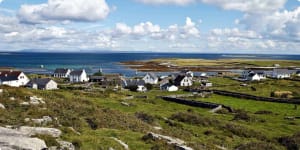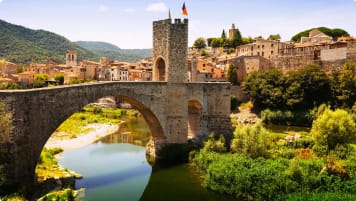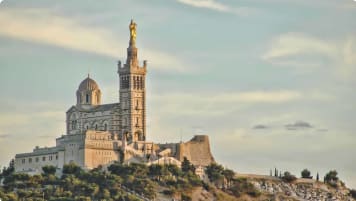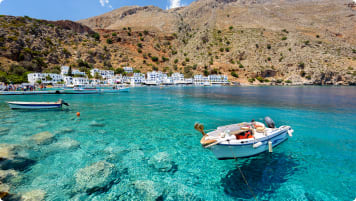Small Group tours exploring the Treasures of Ireland
From A$14,245AUD
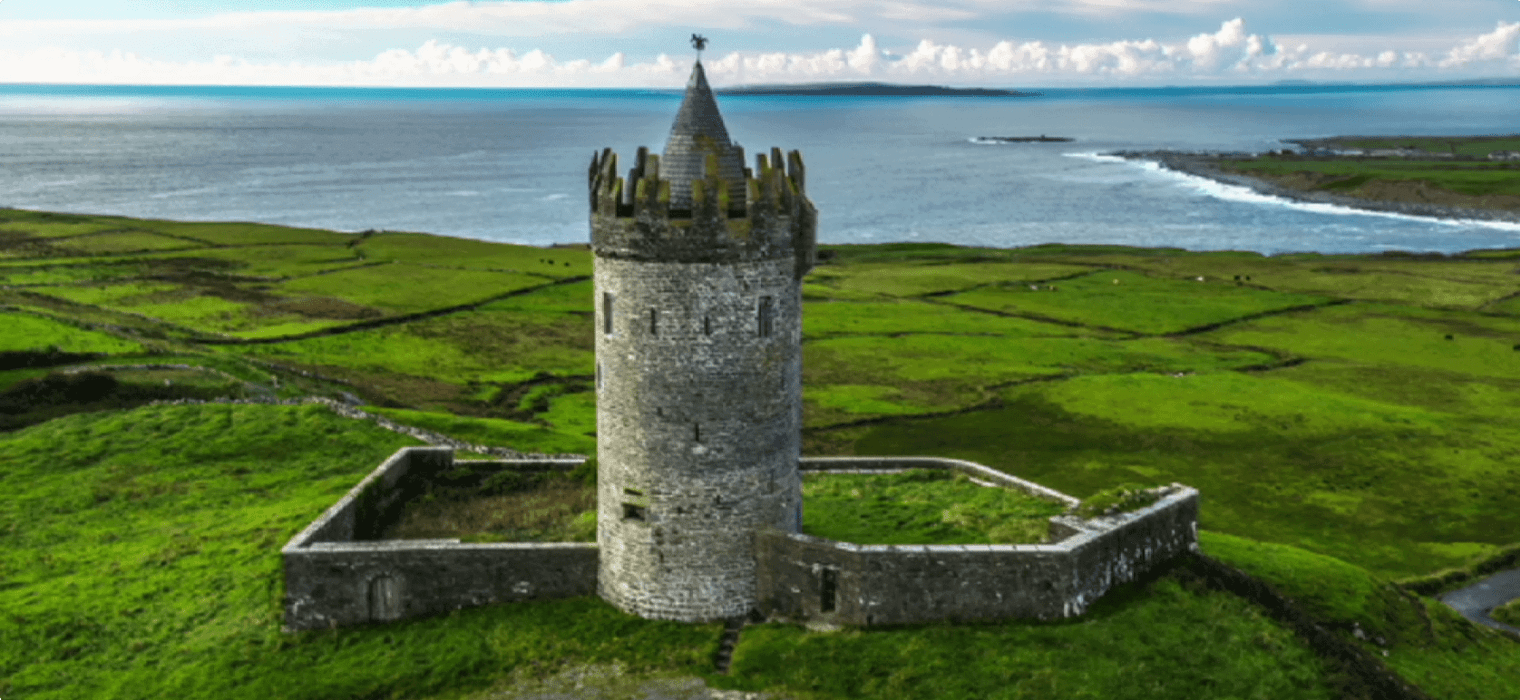
Highlights
- 1. Visit Powerscourt Manor in the Wicklow Mountains to see its glorious gardens and the picturesque house of Kylemore in Connemara.
- 2. Enjoy a performance at the National Folk Theatre (Siamsa Tire) in Tralee.
- 3. Spend 2 nights on the Aran Island of Inis M’hor with its ancient pilgrimage churches and the prehistoric promontory fort of Dun Aonghus.
- 4. Visit Belfast to learn the history of the area and see the famous political murals, as well as the Harland Wolff shipyard.
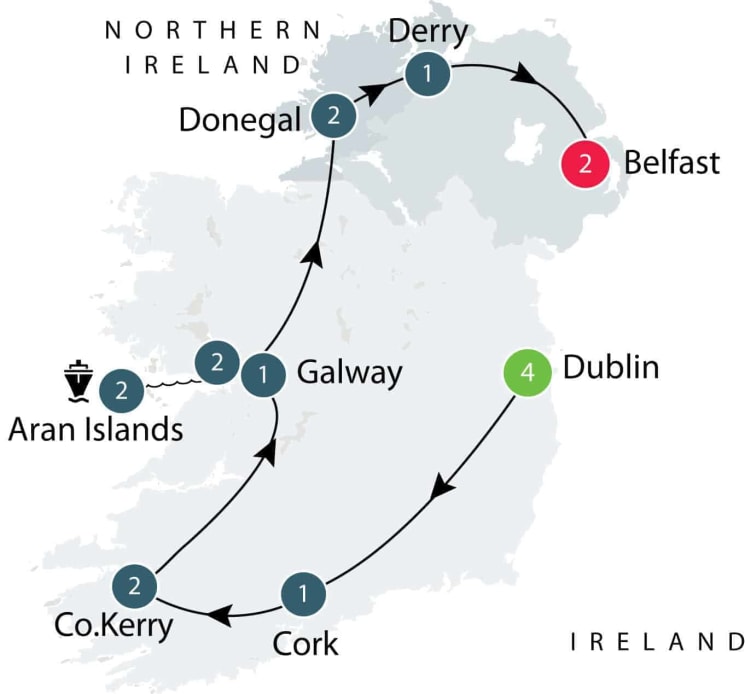
Departure Dates
| Departure Date | Price |
|---|---|
| 15 April 2025 Ends 02 May 2025 • 18 days A$14,245 Twin A$17,195 Single Available | Selected |
| 18 September 2025 Ends 05 October 2025 • 18 days A$14,245 Twin A$17,195 Single Available | |
| 13 April 2026 Ends 30 April 2026 • 18 days A$14,245 Twin A$17,195 Single Available | |
| 17 September 2026 Ends 04 October 2026 • 18 days A$14,245 Twin A$17,195 Single Available |
Treasures of Ireland | Ireland Small Group Tours
Odyssey offers easy, convenient, and relaxed escorted small group tours across Ireland and beyond. We explore Ireland’s natural beauty, its ancient Roman, and Imperial heritage, its World Heritage Sites, and world famous cities, all with some truly spectacular scenery along the way. This and more is all waiting to be explored on one of Odyssey’s small group tours of Ireland, designed for the senior traveller, and led by experienced, and enthusiastic like minded people.
Nowhere else in the world is so much tragedy, exaltation, hope, and disappointment quite so compressed as they are in Ireland. Nowhere else are these historic trials, tribulations, and triumphs such a part of contemporary events and so integrated via song and words into daily life. In Ireland, the past is the present and the present is the past. In this small group tour taking in the history of ancient Ireland and contemporary Ireland, we step out into the evocative land itself, and absorb the poignant history and culture that the country has to offer.
These escorted small group tours of Ireland explore the treasures of Ireland. A popular Ireland vacation program for the couple or the single traveller interested in this style of small group travel. It is a trip designed especially for senior travellers seeking to move beyond the beaten track for the tourist and the usual destinations advertised by other tour companies to experience real Ireland. As we travel on our guided tours, our experienced local tour guide and tour operator share their own stories and knowledge of Ireland, the emerald isle, with you on this small group adventure that takes you to Southern Ireland and Northern Ireland.
Our tour itinerary
Our tour begins in Dublin and takes you clockwise around Ireland to finish in Belfast, Northern Ireland. On the way, we take in quaint villages, stunning scenery, and hidden gems. Our tour takes you to the Cliffs of Moher, Giant's Causeway, and other UNESCO World Heritage Sites.
Some of our key stops include:
Dublin:
The capital of Ireland, Dublin, is home to around a quarter of the nation's population, and is a character-filled city of poets, playwrights and pubs. Our tour explores the history of Ireland at medieval landmarks such as Dublin Castle and St. Patrick's Cathedral, and soaks up the city's legendary literary history, from the ancient Book of Kells to the city streets that inspired Oscar Wilde, W.B. Yeats, and James Joyce.
Cork:
Ireland's second city, Cork, is a charming cathedral city with a laid-back vibe, while the surrounding county - Ireland's largest - is the quintessential Ireland of green hills and villages. En route to the city we visit the ancient royal site of the Rock of Cashel and Blarney Castle - where a kiss to the famous Blarney Stone will endow the visitor with the gift of eloquence!
Kerry:
In the south-west corner of Ireland, County Kerry is home to some of the island's most spectacular scenery. The Ring of Kerry has been a tourist destination for centuries thanks to its stunning and windswept landscape of Atlantic coast, lakes, and mountains. The nearby Dingle Peninsula is home to ancient Celtic forts, Christian sites, and the charming fishing village of Dingle.
Galway:
On Ireland's west coast, County Galway is home to stunning scenery - white sandy beaches, charming villages, and looming mountains. The capital, Galway, is a historic medieval city with a large student population, where streets and pubs heave with live 'trad' music.
Aran Islands:
Off Ireland's west coast, the remote Aran Islands are wild and windswept, a place where traditional Irish culture and Irish language live on in daily life. With the help of a local historian, we will explore these fascinating islands, including the spectacular Bronze Age fort of Dun Aengus, the most impressive in Europe, and the Christian ruins of the 'Seven Churches', dating from the 8th to the 11th centuries.
Donegal:
Long left off the tourist trail, remote Donegal is home to some of Ireland's most spectacular scenery: remote mountain passes, vivid blue lakes, and the northern beginnings of Ireland's Wild Atlantic Way. Proudly independent from the rest of Ireland (the county only barely shares a border with the rest of the Republic), Donegal is over 1/4 Gaeltacht (Irish speaking), and home to a rich local tradition of weaving, known as donegal tweed (which is always written with a small 'd').
Belfast:
Our tour ends in the Northern Ireland city of Belfast, a city that will likely surprise you with its beautiful natural setting and grand Victorian architecture. On our visit, we learn about the city's troubled history from locals on a tour of the evocative and colourful murals of West Belfast, and explore the tragic sinking of the Titanic, which was built in the city's shipyards.
Highlights of Treasures of Ireland tour
The fabulous landscape and the visit to the Aran Islands will create memories that will last well beyond your trip. These memories are paired with the locals stories heard and enjoyed over a meal or drink. Senior travellers joining us on this tour will enjoy the opportunity to spend time at each destination. The Treasures of Ireland tour is a combination of day tour and long-staying dream vacation. This time is spent learning and sharing in a country that has experienced one of the largest historic migrations of its people, and one that touches so many today.
Highlights of our tour of Ireland include a stop in Belfast to learn the history of the area, including a visit to the famous political murals. We also visit the Harland Wolff shipyard. During the tour, we also enjoy a performance the National Folk Theatre (Siamsa Tire) in Tralee and you'll have free time to enjoy a performance at Abbey Theatre (own cost). We experience a walking tour of Powerscourt Manor in the Wicklow Mountains, taking in its glorious gardens and grounds.
We also have an article on the History of Ireland and Ireland's Gems, which you may find helpful.
This small group escorted tour exploring the treasures of Ireland is an 18-day program. This multi day tour is paired with our Scottish Isles program, should you wish to continue your travels with us afterwards. We also offer a short tour of Belfast city. All of our tours to Ireland can be found here. All of our tours to Europe can be found here.
If you are a senior or mature-aged traveller with a thirst for knowledge and an open inquisitive mind, we would love to have you on board for our next departure. For more details, click the ‘Top 5’ or ‘Itinerary’ buttons above! If you’re keen to experience this tour, please call or send an email. Or, to book, simply fill in the form on the right hand side of this page.
History of Ireland
Ireland (Irish: Éire) is an island carved into two after centuries of subjugation, foreign domination, and various conflicts that lasted through the 20th century. Though Ireland had been home to peoples since the late Neolithic, Celtic culture arrived in Ireland during the Iron Age. During this period, Ireland was divided into a number of small kingdoms or clans (tuatha), surrounded by a landed aristocracy whose wealth was primarily in cattle (airi aicme); with the island finally unifying under the one king in the 10th century AD. There were no urban centres, and the population was primarily based around agriculture, cattle, and rural industries, such as dairying, weaving, and spinning.
Though Ireland was never under the dominion of the Roman Empire, Christianity nonetheless reached the island through trade with Rome. Tradition holds that the 5th century St Patrick converted the population from Celtic paganism. Following Patrick, Ireland became a centre of Christian life. Irish missionaries became major proselytisers of Christianity, converting pagan tribes in Scotland, the north of England, and what is today northern France and western Germany. In a time when Europe was barely literate, Irish monasteries became centres of classical and religious learning, and produced the beautiful illuminated manuscripts of which The Book of Kells is the most famous.
From 795 through to the early 11th century, Ireland became the victim of extensive Viking raiding. Eventually the Norse seized territory, establishing the capital of Dublin, and became trading partners of the Irish. In 1014, the Norse were defeated by the Irish High King Brian Boru at the Battle of Clontarf.
In the 12th century, Anglo-Norman adventurers began to conquer territories on the east coast of Ireland, paving the way for the Anglo-Norman invasion of Ireland under Henry II, in 1171. Though technically under English rule, the Middle Ages would see Ireland essentially ruled by a mix of local Irish and Anglo-Norman aristocrats - who increasingly adopted Irish culture and intermarried with the Irish population.
Though England would soon be swept up in the Protestant Reformation, Ireland remained Catholic. The reign of Elizabeth I and her Stuart successors saw the crown reestablish control over the population of Ireland. Significant population transfers occurred, including the Plantation of Ulster, which brought Protestants from England and the Scottish lowlands to settle in the north of Ireland.
The nadir of Irish control over Ireland came in the 18th century with the Protestant Ascendancy, in which the Anglican elite monopolised political rights. Irish culture and language virtually died out, except among the starkly impoverished peasantry of the island's west coast.
However, the subsequent century would see movements for Irish independence re-emerge. The French and American Revolutions inspired the formation of the Society for United Irishmen in the 1790s, whose rebellion was brutally suppressed in the absence of promised French support, while the early 19th century saw the struggle for Catholic emancipation succeed in 1829.
The 19th century would also be defined by poverty and tragedy. Ireland's population, mostly subsistence farmers, would be plunged into famine when the potato became blighted in the mid-1840s. Roughly a million people died of starvation, and more fled abroad to the United Kingdom, United States, Canada, and Australia. Emigration continued through the 19th century, and by 1911, Ireland's population was half what it had been before the Famine.
Following the Famine, the independence movement split between the revolutionary Fenian secret society, and the more moderate movement for home rule and land reform. By the late 19th century, however, young Irish men and women had become frustrated with the slow pace of the home rule movement. A cultural nationalist movement emerged, devoted to the renewal of the Gaelic language and traditional Irish theatre, music, and sport.
On Easter Monday 1916, around a thousand nationalists occupied key spots in Dublin, proclaiming an Irish Republic. Street fighting continued for around a week, until the Republican leaders were forced to surrender. Their execution by the British government galvanised popular support for independence.
1919 saw the outbreak of the Irish War of Independence, which ended in 1921 with the establishment of the Irish Free State, which, notably, included the southern counties but not the north. The treaty divided the independence movement, leading to the Civil War of 1922-1923. In 1949, the southern part of Ireland became the independent Republic of Ireland, while the north remained part of the United Kingdom.
Once among the poorest and most socially conservative countries in Europe, the Republic of Ireland became economically prosperous and socially liberal over the course of the 20th century. Northern Ireland, however, remained ravaged by conflict between the IRA and unionist paramilitaries. The 'Troubles' raged through the 1970s and 1980s, finally ending with the Good Friday Agreement, which saw power shared between the Catholic and Protestant communities of Northern Ireland.
Articles about Ireland published by Odyssey Traveller:
- History of Ireland
- Ireland's Gems
- Learning about Ireland for Seniors
- How The Atlantic Ocean Shaped Early Life in Europe
For all the articles Odyssey Traveller has published for mature aged and senior travellers, click through on this link.
External articles to assist you on your visit to Ireland:
Gallery

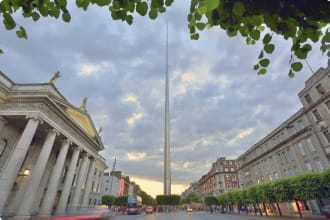

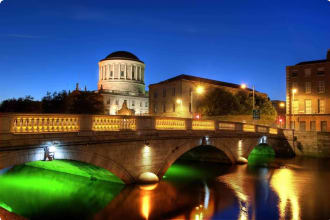
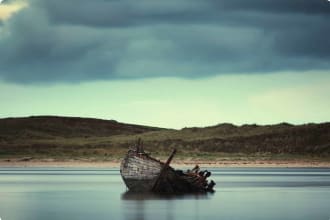
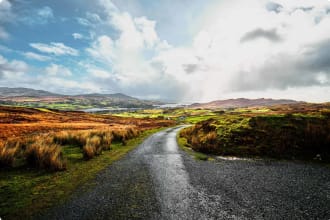
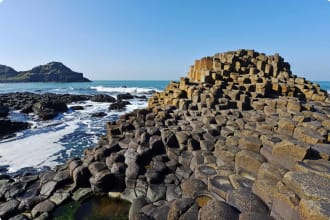
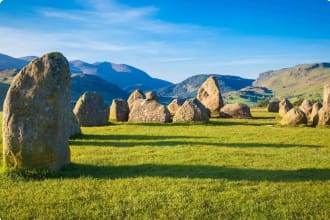
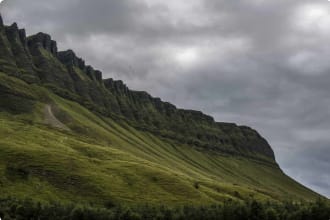
Itinerary
18 days
Day 1: Dublin
Accommodation: 4 nights at Camden Court Hotel or similar
Upon arrival in Dublin, the capital of Ireland, we will arrive individually to the Camden Court Hotel and meet for an introductory meeting and a welcome dinner.
(D)
Day 2: Dublin
Accommodation: Camden Court Hotel or similar
During the next 2 days we will enjoy guided tours of the city of poets, playwrights, and brewing. First we will head to Trinity College, established by Queen Elizabeth I in 1592, where we will meet with a graduate for a tour of the grounds and explanation of the universities history . Here we will also view the ancient Book of Kells, one of Ireland’s most treasured works. The book has been dated to around the 9th century, and though it details the four Gospels in Latin text with elaborate detailing, the ink with which it was written has been traced to northern Afghanistan, offering an intriguing insight into the globalism of the medieval era. In the afternoon we are treated to an expert-led literary walking tour of Tara, site of the High Kings of Ireland. After dinner, we will have a lecture on the history of the country at the hotel.
(B,D)
Day 3: Dublin
Accommodation: Camden Court Hotel or similar
After breakfast, we will enjoy a guided tour of Dublin. Highlights include St. Patrick’s Cathedral and Dublin Castle. After some free time for lunch, we will take a literary walking tour of the city, then enjoy dinner at a local restaurant. Depending on availability, there may be a chance to see a performance at the Abbey Theater at your own expense.
(B,D)
Day 4: Dublin
Accommodation: Camden Court Hotel or similar
Today we will drive south to County Wicklow to visit Powerscourt House and Demesne (domain) at Enniskerry. Where Powerscourt House stands today there was once a 13th century medieval castle, owned by the Le Power Family from which “Powerscourt” takes its name. Powerful Irish families including the O’Tooles and the Fitzgeralds battled for possession of the castle and its lands over the succeeding centuries. Powerscourt remains the archetypical example of the “Big House” of Ireland. The Palladian-style manor overlooks immense terraced gardens which are also in the Italianate style. The estate now belongs to the Slazenger family of tennis racquet fame. Light lunch is included today. Our excursion continues to Glendalough, or the “Glen of Two Lakes.” Founded in the 7th century AD by St. Kevin, this site is regarded as one of the most important monastic sites in Ireland. The evening is at leisure to explore the local fare.
(B,L)
Day 5: Cork
Accommodation: 1 night at Clayton Silver Springs Hotel or similar.
En route to Cork in County Kerry, we visit the famous Rock of Cashel – an outcrop of limestone dominated by a group of buildings; the 12th century round tower, a Romanesque chapel, the 13th century cathedral, the 15th century castle and a restored Hall of Vicars Choral. We then continue to Blarney Castle in County Cork where we can (should you wish!) kiss the world-renowned Blarney Stone at the top of the Castle. Tradition dictates that the gift of eloquence will be bestowed on all those who kiss the Stone! Dinner tonight is at our hotel.
(B,D)
Day 6: Co.Kerry
Accommodation: Ballyroe Heights Hotel or similar
Accompanied by a local guide and storyteller, we depart on an excursion around the Ring of Kerry, often considered the world’s single most picturesque drive. Running through an area of outstanding natural beauty, the circuit takes in the towns of Killorglin, Glenbeigh, Cahersiveen, Waterville, Caherdaniel and Sneem. We return to the hotel for an early dinner before attending a performance of Celtic Steps, a spectacular evening of Irish song and dance, at the Killarney Racecourse.
(B,D)
Day 7: Co.Kerry
Accommodation: Ballyroe Heights Hotel or similar
Today we continue our journey to the picturesque town of Dingle and the Dingle Peninsula, exploring the area’s rich archaeological heritage and unique culture, including the beehive huts, Celtic ‘Ringforts’ which have stood for over 4,00 years, and the tiny Gallarus Oratory. In Dunquin (Dun Chaoin) we stop for free time and a visit to the Blasket Centre where we discover the history, culture, language and unique literary achievements of the island writers. We return to the hotel for dinner.
(B,D)
Day 8: Galway
Accommodation: Loughrea Hotel & Spa or similar
En route to County Galway we experience a guided visit to Bunratty Castle followed by free time for lunch and exploration of the Castle’s Folk Park to learn to learn about rural life in Ireland during the last century. Our transfer continues via The Burren, a vast limestone plateau featuring the “Poulnabrone Dolmen” and the Cliffs of Moher, one of Ireland’s West Coast’s most dramatic landforms. Dinner is included tonight in the hotel.
(B,D)
Day 9: Inishmore
Accommodation: 2 nights at Aran Island Hotel or similar.
Early morning we will transfer to Rossaveal for our ferry to Inis Mor, the largest of the Aran Islands, to enjoy an overnight stay. A local hisatorian will welcome us to this unique place – a remnant of authentic Gaelic civilisation, where Christian ruins stand side by side with remarkable Pagan relics, and where the Irish language and Irish traditions live on in daily life. The afternoon and evening is free to explore at leisure.
(B)
Day 10: Inishmore
Accommodation: 1 night at Aran Island Hotel or similar.
After breakfast we meet our local guide and tour Inishmore, as well as exploring the spectacular Bronze Age promontory fort of Dun Aengus. The afternoon is at leisure and dinner will be at the a local pub this evening.
(B,D)
Day 11: Galway
Accommodation: 2 nights at Clayton Ballybrit Hotel or similar.
After breakfast, we return to the mainland. On arrival we make our way to Galway. On our way we stop to we visit Kylemore Abbey and its delightful, extensive gardens where lunch is included. Nestled on the lake shore in the heart of the Connemara Mountains, and originally built in 1867 as a romantic gift, Kylemore Abbey is regarded as one of Ireland’s most romantic buildings. We then continue travelling to Connemara National Park. A broad peninsula between Killary Harbour and Kilkieran Bay in the west of County Galway, Connemara has long been regarded as the real emerald of Ireland. Connemara National Park covers some 2,957 hectares of scenic mountains, expanses of bogs, heaths, grasslands and woodlands. Much of the present National Park lands formed part of the Kylemore Abbey Estate and the Letterfrack Industrial School, the remainder having been owned by private individuals. The southern part of the Park was at one time owned by Richard (Humanity Dick) Martin who helped to form the Society for the Prevention of Cruelty to Animals during the early 19th century.
(B,L)
Day 12: Galway
Accommodation: Clayton Ballybrit Hotel or similar.
We begin our day with an expert led walk of Galway city during which we will see Galway Cathedral, the Spanish Arch and part of the original city wall. Later, there will be free time for lunch and to explore Galway city in the afternoon. Dinner this evening will be at the hotel
(B,D)
Day 13: Donegal
Accommodation: 1 night at Abbey Hotel or similar
We depart for County Donegal, undoubtedly one of Ireland’s most untouched and ruggedly beautiful counties. Donegal’s striking landscape has remained relatively unaffected by the passage of time. In Sligo, we will be joined by a local expert, for a lecture at the Yeats Society in Sligo. We continue our journey to Drumcliffe, the final resting place of the famed Irish poet, WB Yeats, under the majestic mountain of Ben Bulben. We arrive in Donegal late afternoon.
(B)
Day 14: Donegal
Accommodation: Abbey Hotel or similar.
Today, we enjoy a heritage walk of Donegal town and a guided visit of the 15th century Donegal Castle. We also visit Magee Tweed where we witness a weaving demonstration. We then travel to Slieve League, home to the tallest sea cliffs in Europe and then drive back to our hotel via the spectacular Glengesh Pass.
(B)
Day 15: Derry
Accommodation: Derry City Hotel or similar
We transfer to Derry and enjoy an expertly-led historical guided walking tour of Derry’s walls. There will be some free time for our own exploration this afternoon. Derry-Londonderry made history in July 2010 when it was awarded the inaugural UK City of Culture designation for 2013. The journey towards City of Culture is both compelling and ambitious and will help unlock creativity and generate new connections to shape the new story of our city’s vibrant future. The City has been rapidly developing its tourism offer and its exceptional assets include the most complete walled city in Europe, its peace making history and the lively youth culture make it a “cultural powerhouse.”
(B)
Day 16: Belfast
Accommodation: 2 nights at Ramada Wyndham Hotel or similar
En route to Belfast via the North Coast, we will visit the famous Bushmills Whisky Distillery, the world’s oldest licensed whisky distillery and then continue on to the spectacular formations of the Giant’s Causeway, a UNESCO World Heritage site. A natural amphitheatre made up of hexagonal shaped basalt rocks. Our final destination is Belfast where we will stay for the final 2 nights.
(B)
Day 17: Belfast
Accommodation: Ramada Wyndham Hotel or similar
After breakfast we enjoy a lecture from a local expert followed by some free time. In the afternoon we depart for our Black Taxi tour of Belfast, visiting the colourful and evocative murals of West Belfast. It has been said that a city can be defined by its taxi drivers and nowhere is this truer than in Belfast. We visit the Titanic Quarter of Belfast & the Titanic Experience Exhibition. We will enjoy a farewell dinner at a local restaurant.
(B,D)
Day 18: Belfast
Our tour will conclude today after breakfast.
(B)
Tour Notes
- Group size limited to 16.
- Itineraries may change if flight schedules, site availability, and other inclusions have to be amended prior to departure.
Includes / Excludes
What’s included in our Tour
- 17 nights of hotel accommodation.
- 17 breakfasts, 2 lunches, and 10 dinners
- Transport in comfortable and modern coaches.
- Services of a tour leader for the duration of tour.
- Ferry services.
- All excursions, entrance fees, and local guides.
- Service charges and gratuities.
What’s not included in our Tour
- Comprehensive travel insurance.
- International airfares and departure taxes.
- Items of a personal nature such as telephone calls and laundry.
Participants must be able to carry their own luggage, climb and descend stairs, be in good health, mobile and able to participate in 3-5 hours of physical activity per day, the equivalent of walking / hiking up to 8 kilometers per day on uneven ground.
Book now
Make it a private tour
Easing your journey
Crossing international borders with restrictions
The list of requirements to travel internationally has changed and will continue to change for several years. Odyssey is here to assist you in managing your way through these requirements:
For more information see our Crossing international borders with restrictions page.
Book With Confidence
If less than 30 days before your tour starts you are unable to travel as a result of Government travel restrictions, Odyssey Traveller will assist you with a date change, provide you with a credit or process a refund for your booking less any non-recoverable costs.
See Terms and conditions for details.
Peace of Mind Travel
The safety of our travellers, tour leader, local guide and support staff has always been our top priority and with the new guidelines for public health and safety for keeping safe for destinations around the world, we’ve developed our plan to give you peace of mind when travelling with us.
See Peace of Mind Travel for details.
Reviews
Treasures of Ireland is a fabulous, comprehensive 18 -day tour of Ireland. It covers literary, cultural, geological, historical and social aspects of this amazing country. The tour has variety, is well balanced with touring and free-time. The 'small group' enables new friendships to be formed easily and supports easy access to historical sites and other places of significant interest. This is my second Odyssey tour and it has met or exceeded all my expectations. I highly recommend the late summer early spring tour. Pamela K. Aug '24
This was a very comprehensive tour of Ireland, doing a full circle of the island of Ireland and included the Aran Island of Inish Mor. The small size of the group was wonderful as we could hear local guides and ask questions without holding up others. The tour had the right balance of touring and free time and included many meals. Jenni S. Apr '24
My wife and I have been to Ireland several times before, but this tour even though we re-visited some places visited before , was most enjoyable and better still, most informative. Odyssey did a great job despite the "hoards" of European visitors we had to compete for space with. Ian and Brenda S. Aug '18
Treasures of Ireland was a well organised tour, giving me a greater depth of understanding of the country, its politics and its people. Participant April 2018
Odyssey lets you dive into the troubled history of the island and gave me a better understanding of the issues in the past. Participant April 2018
All guides were excellent. They knew their chosen subject very well, and in Northern Ireland spoke with a passion about the past and present situation and their hopes for the future of Ireland. Participant April 2018
Reading List Download PDF
Modern Ireland 1600-1972
R. Foster
Masterfully blending narrative and interpretation, and R.F. Foster's Modern Ireland: 1600-1972 looks at how key events in Irish history contributed to the creation of the 'Irish Nation'.
'The most brilliant and courageous Irish historian of his generation'
Colm Tóibín, London Review of Books
'Remarkable ... Foster gives a wise and balanced account of both forces of unity and forces of diversity ... a master work of scholarship'
Bernard Crick, New Statesman
'A tour de force ... Anyone who really wants to make sense of Ireland and the Irish must read Roy Foster's magnificent and accessible Modern Ireland'
Anthony Clare
'A magnificent book. It supersedes all other accounts of modern Irish history'
Conor Cruise O'Brien, Sunday Times
'Dazzling ... a masterly survey not so much of the events of Irish history over the past four centuries as of the way in which those events acted upon the peoples living in Ireland to produce in our own time an "Irish Nation" ... a gigantic and distinguished undertaking'
Robert Kee, Observer
'A work of gigantic importance. It is everything that a history book should be. It is beautifully and clearly written; it seeps wisdom through its every pore; it is full of the most elegant and scholarly insights; it is magnificently authoritative and confident ... Modern Ireland is quite simply the single most important book on Irish history written in this generation ... A masterpiece'
Kevin Myers, Irish Times
R. F. Foster is Carroll Professor of Irish History at the University of Oxford and a Fellow of Hertford College, Oxford. His books include Modern Ireland: 1600-1972, Luck and the Irish and W. B. Yeats: A Life.
The Green Flag: A History of Irish Nationalism
Robert Kee
THE GREEN FLAG stands as the most comprehensive and illuminating history of Irish Nationalism yet published. For many years available as three separate volumes (THE MOST DISTRESSFUL COUNTRY, THE BOLD FENIAN MEN and OURSELVES ALONE), this outstanding history is now available as a single volume.
Making Sense of the Troubles: A History of the Northern Ireland Conflict
David McKittrick
First published ten years ago, Making Sense of the Troubles is widely regarded as the most 'comprehensive, considered and compassionate' (Irish Times) history of the Troubles in Northern Ireland. Written by a distinguished journalist and a teacher of history in Northern Ireland, it surveys the roots of the problems from 1921 onwards, the descent into violence in the late 60s, and the three terrible decades that followed. McKittrick and McVea have now fully updated the book to take into account the momentous events of the last ten years, including the disbanding of the IRA, Ian Paisley's deal with the Republicans and the historic power-sharing government in Belfast.
'An updated reissue of a collaborative study published 12 years ago to rave reviews as a frank, accurate and authoritative narrative of events which should be required reading for anyone hoping to understand what had been going on in the North' Irish Independent
'I would strongly advocate that it be made compulsory reading for everyone in Northern Ireland because for the first time it is our history, all of it warts and all, presented in a clear and understandable way' Irish News
'Extraordinarily well-balanced, sane, comprehensive and rich in sober understatement' Glasgow Herald
'Compellingly written and very even-handed. By far the clearest account of what happened in the Northern Ireland conflict and more importantly why it happened' Irish News
David McKittrick has reported on the Northern Ireland troubles since the 1970s. After working for the Irish Times and BBC he has been Ireland correspondent of the London Independent since 1985. Awards include the Orwell Prize, correspondent of the year and Belfast journalist of the year.
David McVea graduated in politics and modern history from Queen's University, Belfast, and has an MA from Sussex University. He was head of the politics department of a Belfast grammar school where he taught both history and political studies.
The Famine Plot: England's Role in Ireland's Greatest Tragedy
Tim Pat Coogan
During a Biblical seven years in the middle of the nineteenth century, fully a quarter of Ireland’s citizens either perished from starvation or emigrated in what came to be known as Gorta Mór, the Great Hunger. Waves of hungry peasants fled across the Atlantic to the United States, with so many dying en route that it was said, "you could walk dry shod to America on their bodies." In this sweeping history Ireland’s best-known historian, Tim Pat Coogan, tackles the dark history of the Irish Famine and argues that it constituted one of the first acts of genocide. In what The Boston Globe calls "his greatest achievement," Coogan shows how the British government hid behind the smoke screen of laissez faire economics, the invocation of Divine Providence and a carefully orchestrated publicity campaign, allowing more than a million people to die agonizing deaths and driving a further million into emigration. Unflinching in depicting the evidence, Coogan presents a vivid and horrifying picture of a catastrophe that that shook the nineteenth century and finally calls to account those responsible.
The Irish Slaves: Slavery, indenture and Contract labor Among Irish Immigrants: Volume 1
Rhetta Akamatsu
They came in the holds of overcrowded ships, packed in among cargo and animals. They were sold to others to work as hard and under as dismal conditions as their owners chose. They were taken to the West Indies, to Barbados, to the American colonies, and beyond. A familiar story, is it not? But these immigrants, derived of all personal freedom, were Irish, and their servitude started long before black slavery was common. Even among those not enslaved, many were treated nearly the same as indentured servants, or later as contract labor on the railroads, mines, and other dangerous tasks. Your eyes will be opened by this book if you dare to allow them to be, as you learn more of this nearly forgotten part of world history. NOTE TO READERS FROM THE AUTHOR: This book contains quotes from written works and documents that have spelling other than the standardized spelling we use today. I did not correct this spelling. These are not typos or mistakes, as some readers have thought. They are merely historical differences.
Ireland: The Autobiography: One Hundred Years of Irish Life, Told by Its People
John Bowman
Over the past hundred years, Ireland has undergone profound political, social and cultural changes. But one thing that has not changed is the Irish genius for observation and storytelling, invective and self-scrutiny. Ireland: The Autobiography draws upon this genius to create a portrait of a century of Irish life through the words of the people who lived it.
Broadcaster and historian John Bowman has mined archives, diaries and memoirs to create a remarkably varied and delightfully readable mosaic of voices and perspectives. Ireland: The Autobiography is a brilliantly selected, wide-ranging and engrossing take on the last century of Irish life. It gives us a portrait of Ireland unlike anything we've read before.
'Absorbing and illuminating ... John Bowman has selected a range of accounts of Irish life that do justice to what happened, what it felt like, and the personal and societal experiences alongside the "official" version.' Diarmaid Ferriter, Irish Times
'Very enjoyable' Philip Boucher-Hayes
The Celtic Myths: A Guide to the Ancient Gods and Legends
Miranda Aldhouse-Green
Introduces the world of the Celts, their gods and goddesses, heroes, monsters and villains.
As well as vividly exploring the tales, the author brings her expertise in the archaeology of the Iron Age and particularly shamanism to bear on the mythical worlds she describes, with evidence as diverse as the Gundestrup Cauldron and the famous bog bodies.
Starting with a discussion of how myths are transmitted and by whom, the author continues with an account of the Irish and Welsh myths and their key actors and motifs, before moving on to consider themes such as heroes, animals, women, environment and the Otherworld. Finally, the author asks how the myths survived the Christianization of Europe and looks at the influence of monastic chroniclers on the tales, which they preserved and adapted. Includes more than 80 illustrations
The Ancient Paths: Discovering the Lost Map of Celtic Europe
Graham Robb
Graham Robb's new book will change the way you see European civilization.
Inspired by a chance discovery, Robb became fascinated with the world of the Celts: their gods, their art, and, most of all, their sophisticated knowledge of science. His investigations gradually revealed something extaordinary: a lost map, of an empire constructed with precision and beauty across vast tracts of Europe. The map had been forgotten for almost two millennia and its implications were astonishing.
Minutely researched and rich in revelations, The Ancient Paths brings to life centuries of our distant history and reinterprets pre-Roman Europe. Told with all of Robb's grace and verve, it is a dazzling, unforgettable book.
